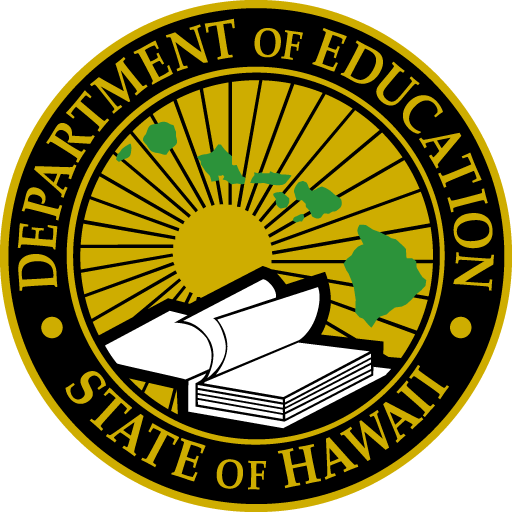Transition Centers
Hawaiʻi’s public school transition centers were originally established to support our newly arrived military-dependent students. Over time, their role has expanded, providing a vital safety net for all students facing transient living circumstances.
federal impact Aid
The Federal Impact Aid Program Survey is designed to assist local school districts who have lost revenue due to federal properties exemption from local property taxes. Financial assistance is determined by calculating the concentration of students who reside on military bases, low-rent housing properties, Indian lands, and other federal properties, have parents in the uniformed services, or have parents employed on eligible federal properties.
In Hawaiʻi, Federal Impact Aid helps offset costs for school materials and resources, substitute teachers, student transportation, school utilities such as electricity, and other services at schools statewide. All students and schools benefit from Impact Aid.
The Department’s Federal Impact Aid Program Survey date for school year 2025-2026 is Sept. 3, 2025.
View this Impact Aid webpage from the National Association of Federally Impacted Schools for more information and frequently asked questions.
Military-Impacted Schools
A military-impacted school is a public school with a significant population of military-connected students. The designated military-impacted schools in Hawaiʻi are listed below.
Central District
- ʻAiea High
- Āliamanu Elementary
- Āliamanu Middle*
- Daniel K. Inouye Elementary*
- Helemano Elementary
- Hickam Elementary*
- Kīpapa Elementary
- Leilehua High*†
- Makalapa Elementary
- Mililani High†
- Mililani Middle
- Mililani ʻIke Elementary
- Mililani Mauka Elementary
- Mililani Uka Elementary
- Mililani Waena Elementary
- Moanalua Elementary
- Moanalua Middle
- Moanalua High†
- Mokulele Elementary*
- Nimitz Elementary*
- Pearl Harbor Elementary*
- Pearl Harbor Kai Elementary*
- Radford High*†
- Red Hill Elementary
- Scott Elementary
- Shafter Elementary
- Solomon Elementary*
- Wahiawā Elementary
- Webling Elementary
- Wheeler Elementary*
- Wheeler Middle*
Leeward District
- Barbers Point Elementary
- Campbell High*†
- ʻEwa Elementary
- ʻEwa Beach Elementary*
- ʻEwa Makai Middle*
- Highlands Intermediate
- Holomua Elementary
- Honouliuli Middle
- Hoʻokele Elementary*
- ʻIlima Intermediate
- Iroquois Point Elementary
- Kaleiopu‘u Elementary
- Kanoelani Elementary
- Kapolei Elementary
- Kapolei Middle
- Kapolei High
- Keoneʻula Elementary
- Lehua Elementary
- Mauka Lani Elementary
- Pearl City Elementary
- Pearl City High
- Waikele Elementary
Windward District
- Mōkapu Elementary*
- ʻAikahi Elementary
- Kailua Intermediate*
- Kainalu Elementary*
- Kalāheo High*
* Indicates a school recognized as a Purple Star NORBERT Hawaiʻi awardee for creating a welcoming and safe environment for incoming military-dependent and transitioning students.
† Indicates a Chapter 35 school.
General FAQs
Are there any Department of Defense (DOD) schools in Hawaiʻi?
There are no DOD schools in Hawaiʻi, including those on military installations. All public schools are part of the Hawaiʻi State Department of Education.
We are moving to Hawaiʻi — what school can my child attend?
The school your child can attend will depend on where you will live. Please contact your service’s school liaison officer.
What do I need to do to register my child for school in Hawaiʻi?
As with any other student enrolling in Hawaiʻi’s public schools, you will need:
- Student Enrollment Form (PDF) or the Supplemental Kindergarten Enrollment Form (PDF) for students entering kindergarten.
- Home Language Survey (PDF)
- Valid photo ID of parent/guardian
- Birth certificate
- Proof of current address
- Health requirements: Health Record Form, immunizations, and a tuberculosis exam
- Copy of transcript from last school
- If necessary, legal documents, other documents from previous school, special needs documents
Can we pre-enroll our child for school before we arrive in Hawaiʻi?
No, the school your child can attend will be dependent on where you will live.
Should I report Cost of Living Allowance (COLA) and other income when filling out an application for free and reduced-price meals for my child?
Yes, the following income should be reported in the application:
- Off-base housing allowance
- Base salary
- COLA
- Food BAS (Subsistence in Kind)
- Clothing allowance (once a year)
My child is currently in a gifted and talented program — will the new school in Hawaiʻi accept his/her continued placement in the gifted and talented program?
Your child’s new public school in Hawaiʻi shall initially honor placement of the student in educational programs based on current educational assessments conducted at the school in your previous state or participation and placement in like programs in the sending state; provided that these programs exist in your child’s new school. The programs include but are not limited to Gifted and Talented programs, Advanced Placement courses and English Learner programs. This initial placement shall not preclude the Hawaiʻi school from performing subsequent evaluations to ensure appropriate placement of the student. The new school may allow the student to attend similar educational courses within the school district if it does not offer such educational programs.
My high school child is currently taking honors/Advanced Placement classes — will he/she be able to take these classes in Hawaiʻi?
Yes, your child’s new public school in Hawaiʻi shall initially honor placement of the student in educational programs based on current educational assessments conducted at the school in your previous state or participation and placement in like programs in the sending state; provided that these programs exist in your child’s new school. The programs include but are not limited to Gifted and Talented programs, Advanced Placement courses and English Learner programs. This initial placement shall not preclude the Hawaiʻi school from performing subsequent evaluations to ensure appropriate placement of the student. The new school may allow the student to attend similar educational courses within the school district if it does not offer such educational programs.
I have a special needs child with an Individual Education Plan (IEP) at his/her current school — will the new school honor this IEP?
The new school shall initially provide comparable services to a student with disabilities based on the student’s current IEP. Additionally, the school shall make reasonable accommodations and modifications to address the needs of incoming students with disabilities, subject to an existing section 504 or Title II Plan, to provide the student with equal access to education. The school can perform subsequent evaluations to ensure appropriate placement of the student.
How can I apply for a geographic exception (GE) so my child can attend a different school than the one designated for the area where we live?
The criteria for applying for a GE can be found here. The principal at the school you wish to attend outside of your geographic district will make the final decision on the GE application.
I just received an offer for permanent housing — why can’t my child stay in his/her current school for at least the remainder of the school year?
Your child is required to attend the school in the geographic area of your residential location. Requests to remain in a school outside of your housing area will be considered by your child’s current school principal. The principal’s decision is most often based on school capacity. For example, some schools serve the newly arrived children residing in temporary lodging facilities (TLF) in addition to military family housing residents within the school geographic area. When families move out of TLF into permanent housing, the school must then accommodate the new families in TLF.
When does school start and end?
Please refer to the School Calendar. Individual school calendars may vary slightly, so please check with your school for a detailed breakdown of its calendar.
Is kindergarten full-day, and what are the age requirements for kindergarten attendance?
Yes, kindergarten is full-day in Hawaiʻi. To attend kindergarten in Hawaiʻi, which is mandatory, a child must be 5 years of age by July 31 to enroll for the school year that begins in August.
What are the requirements for homeschooling my child?
Homeschooling requirements can be on the homeschooling page.
How do I find out information regarding private schools in Hawaiʻi?
Please visit the Hawaiʻi Association for Independent Schools website.

